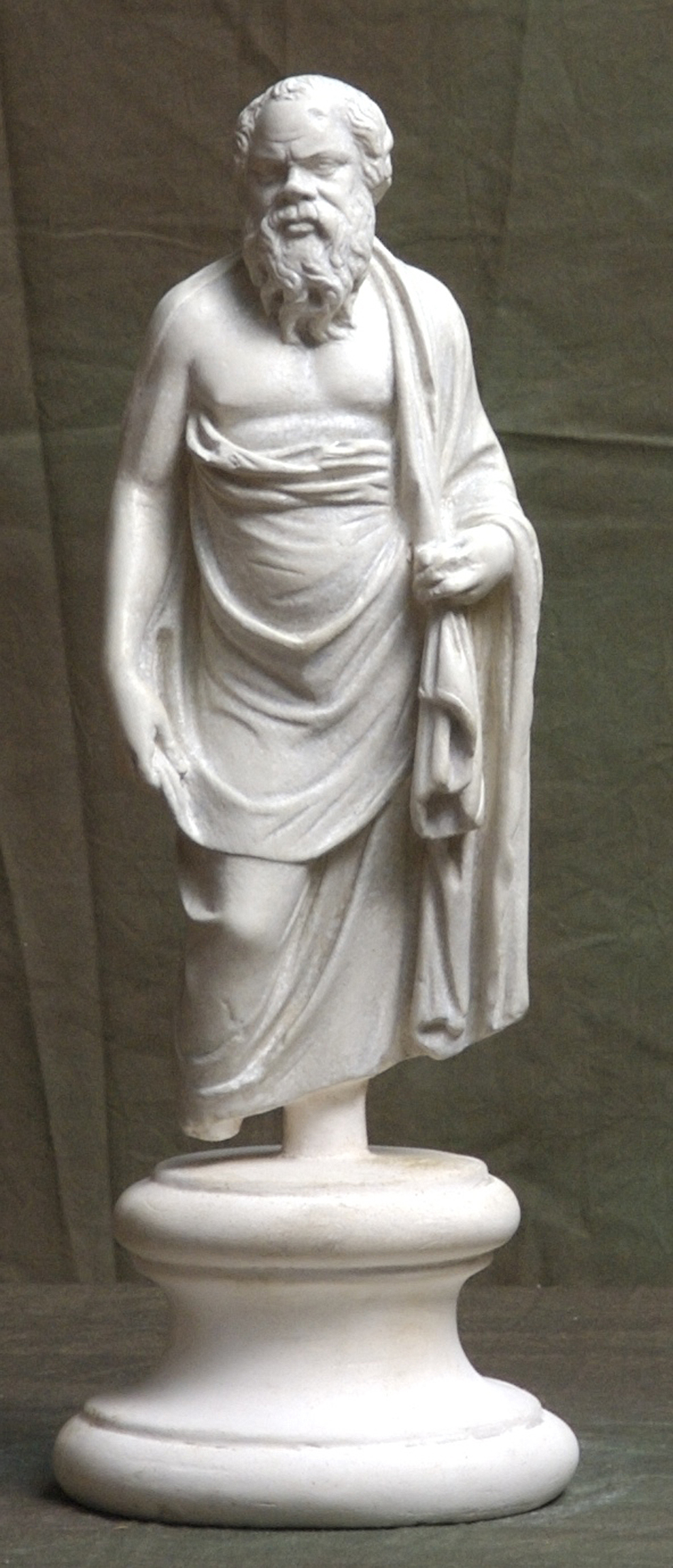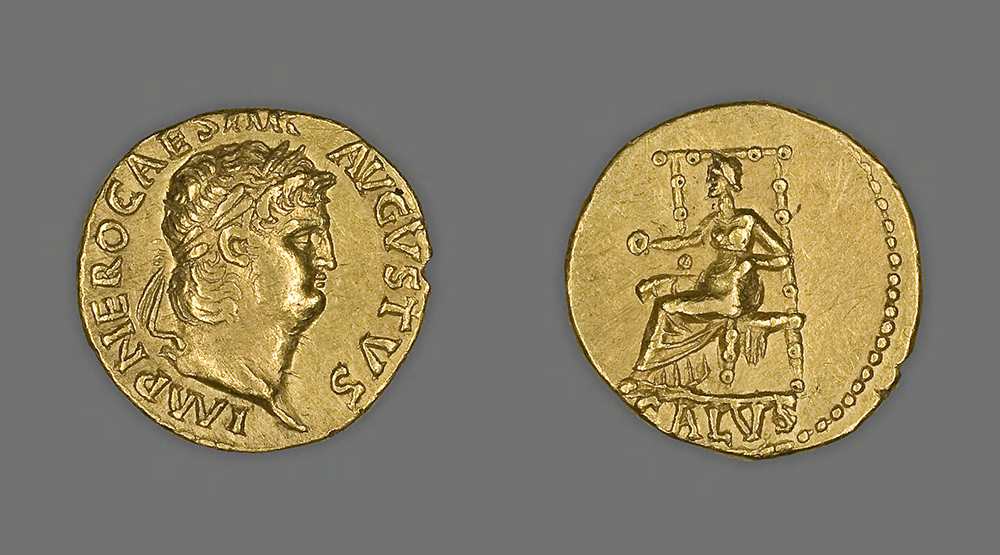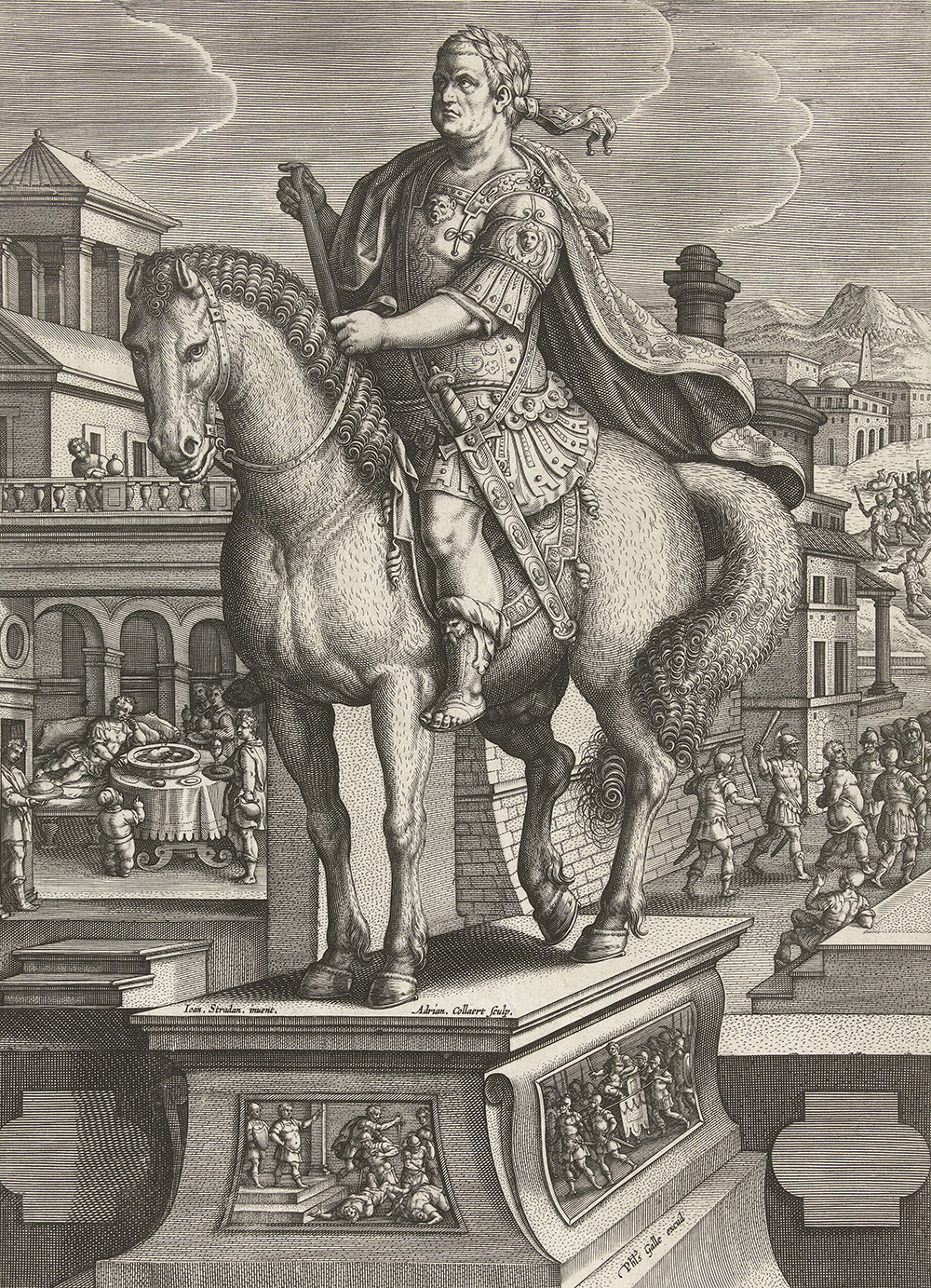
Boy Drawing a Bust of the Roman Emperor Vitellius, by Wallerant Vaillant, c. 1665. The Metropolitan Museum of Art, Gift of Arthur Sachs, 1918.
When Socrates announced that he wanted to take up dancing, all his friends at the drinking party broke out with laughter. What was so funny about this declaration? Socrates wondered. Was it because dancing might be good for his health and well-being, or that it would exercise all of his muscles and render his proportions more balanced and beautiful? “Or is this why you’re laughing,” Socrates asked, indicating his round belly, “because my stomach is larger than it should be and I want to reduce it to more normal size?” If these questions were largely rhetorical, this is not the first time Socrates’ body was discussed in ancient texts.
Widely depicted as pudgy and ugly, Socrates was sometimes likened to the ancient woodland god Silenus, often depicted in Greek statuary as fat, bald, and drunk. Said to pay no attention to the beauty or ugliness of other people, the agiing philosopher left no evidence that he was concerned about his own physical shortcomings. His friends agreed that these defects—and the Greeks did see them as defects—were compensated for by his excellent mind. It may also be that Socrates’ status as a great thinker shielded him from the kinds of insults that another man’s belly might invite.
Albeit viewed as a deviation from aesthetic norms, the fact that excessive flesh was not a particularly vexing moral or medical issue in antiquity needs to be stressed from the outset. It was not the master pathology it would become by the late twentieth century. It is true that the Greeks expressed concern about the possible consequences of overconsumption and sedentary lifestyles. But, whereas developing a soft, fat body was one possible result of immoderation, they remained primarily concerned about the moral effects that “luxury” could have on the person. Fat mattered to the Greeks and Romans partly because it was bound up with ideas about status.

A moderate level of fleshiness was natural and evidence of good health. The influential physician Galen commended constitutions that sat “midway between thin and corpulent.” Ancient doctors reasoned that blood was created from the food one eats, so that overeating and not exercising threatened to create more blood than was required for healthy functioning. Not only did surplus blood generate numerous diseases, Galen thought, but it created sensations of heaviness, sluggishness, and pain in both body and mind. Overeating could thus result in mental lethargy. While moderate fasting was considered a useful way of minimizing the bloating effects of “plethora,” or weight gain, a more effective measure was therapeutic bloodletting or phlebotomy.
How did women fit into ancient representational schemes? The answer is complicated, especially when we consider the wider Hellenized world. The ancient Egyptians, for instance, evinced a rather conflicted view of fat. If predynastic art from around 3000 bc often featured fleshier women, this preference was eclipsed by an artistic idealization of slender youthfulness that lasted for over two thousand years. Egyptian depictions of women often emphasized their sexuality and were apparently designed for a male gaze. Whereas “women had to be youthful, shapely, and free from the ravages and realities of childbirth,” male bodies were also idealized with limbs that “were shown well-muscled, and biceps…indicated by a prominent bulge in the upper arm.” Archaeological digs reveal how far from reality this fantasy of physical beauty could deviate. While pharaohs were typically represented in art with young and vigorous physiques, the mummies of several rulers (such as Amenhotep III and Ramses III) reveal large folds of skin suggesting they had been quite fat when they died. Indeed, the recently discovered body of the female pharaoh Hatshepsut has been described as having been “hugely obese” in life.
If Greek and Roman women did not receive much artistic attention, they too could be judged according to appearance. Among the physical features considered pleasing in a Roman woman were firm breasts, shapely hips, and a flat stomach. If we believe the comic poet Terence, in the second century bc girls were encouraged to be very slender, and if one showed the slightest tendency toward plumpness she could be jokingly said to be in training to be a boxer. Things had not changed much by the time of the Empire. A character in one of Martial’s satirical epigrams was explicit on this point:
Flaccus, I don’t want a slender girlfriend whose arms would be encircled by my rings, who would shave me with her bare haunch and prick me with her knee, who has a saw projecting from her loins and a spearhead from her arse. But neither do I want a girlfriend weighing a thousand pounds. I am a flesh-fancier, not a fat-fancier.
As was often the case, beauty ideals were closely linked to conceptions of health and morality. Greek medical advice for females recommended dietary vigilance and exercise, as well as avoiding warm baths, so that girls did not become too fat. Rufus of Ephesus urged mothers to monitor their daughters for signs of “plethora.” Pregnant women were particularly warned not to gain too much weight lest they become, as Soranus wrote, plethoric as well as “fat and ill-proportioned.” Building upon the idea that sexual intercourse was a heat-generating activity capable of “melting” fat, and that excess flesh to some extent resulted from the accumulation of humors, Soranus also said that frequent and vigorous coitus was an ideal method for women to maintain their figures. It was the lack of sex that could cause weight gain as well as menstrual problems. As we have seen, then, cold, moist, and less active female bodies were considered more likely to succumb to fleshiness and softness.
Classical perceptions of “softness” were relational, and heavily reliant upon beliefs about how the Greeks and Romans measured up to other peoples in the Mediterranean and beyond. The Greeks were particularly sensitive to what their neighbors were up to. They perceived the unholy trinity of eating, drinking, and sexuality everywhere around them, from the Sybarites and Sicilians of southern Italy, famous for their pastries and cookbooks, to the Syrians, Lydians, and Persians of the east. Imagining themselves as an island of virtue amid a sea of moral and physical corruption, Greeks loved to tell tales about the “effeminate” luxury of others in the region. They were particularly appalled by the “decadent” Persian custom of lavishing upon their rulers the most delicious, refined, and costly food and drinks from across their empire, and often depicted the Persian army as plump, lazy, and wallowing in luxury. Physical and moral softness were thus central features of how the Greeks perceived cultural difference.
Stories were told of fat tyrants. Athenaeus offered this garish portrait of Ptolemy VII of Egypt:
His addiction to luxury led to him being physically disabled, as a result of his obesity and the size of his belly, which was too large to get one’s arms around easily.
To make matters worse, his tunic was diaphanous, so that all could gaze upon what was beneath, an extravagance that would have immediately registered as “effeminate” in Rome.
Even more fascinating were those tyrants who had actually been incapacitated by fat. Like his predecessor, Ptolemy VII’s son Alexander “also surrendered to obesity,” reputedly being so fat that he could not take a leisurely stroll “unless he leaned on two people as he moved.” As was often the case in his lively writing, Athenaeus’ words were carefully chosen. To become fat to the point of incapacitation signified powerlessness in the face of one’s appetites. Such subordination could only be called “surrender,” except here it was fatness itself that had conquered the king. Worse, perhaps, was the fate of the luxurious King Magas of Cyrene. Here was a ruler who was so “enormously heavy near the end of his life” that he “ultimately suffocated because of his obesity, since he never got any exercise and consumed large amounts of food.” Designed to leave readers aghast at the extremes one might find among Asiatic peoples, such stories also functioned as cautionary tales for those who might succumb to similar vices. In the case of elite bodies bloated by luxurious living, fatness was a reminder of how the ideals and practices of other peoples might end up softening Rome itself.
Hellenistic culture might have scoffed at the perceived excesses of other cultures, but the problem of luxurious overindulgence was no foreign affair. This was especially so since many of the luxuries that worried moralists were a consequence of trade links with the rest of the Mediterranean.
According to Suetonius, the emperor Claudius was a notorious glutton much given to excesses of sexuality, cruelty, and paranoia:
He was eager for food and drink at all times and in all places…He hardly ever left the dining room until he was stuffed and soaked; then he went to sleep at once, lying on his back with his mouth open, and a feather was put down his throat to relieve his stomach.
Despite having to behold this image, which was hardly consistent with imperial dignitas, Suetonius’ worried readers could breathe a collective sigh of relief. “Immoderate in his passion for women,” at least Claudius was “wholly free from unnatural vice.”
Claudius’ successor, Nero, saw no problems in being represented as corpulent in official art. Rather, in the portraits he commissioned, Nero seems to have emphasized this trait, and his final portraits were even modeled on Ptolemaic styles in which fleshy faces were intended to convey royal abundance and beneficence. The flesh that Nero relished was grist to the mill of critics eager to reduce deeds to physiques. Suetonius’ head-to-toe sketch of the tyrant counts his fleshiness as evidence of an aberrant physiognomy: he was about the average height, his body marked with spots and malodorous, his hair light blond, his features regular rather than attractive, his eyes blue and somewhat weak, his neck over thick, his belly prominent, and his legs very slender.

Those who succeeded Nero fared no better in the eyes of ancient historians. When the first-century emperor Aulus Vitellius failed to emerge victorious from a civil war launched by his rival Otho, Tacitus blamed his failure on moral turpitude connected to his penchant for good food. That Vitellius was also a rather fat man is evident in the statues and busts of him that survive. Considering the conventions of elite portraiture of the period, it may be possible to read these as proudly projecting imperial power. Yet when the emperor fell from grace, his status shield slipped as well. What might have previously been viewed as a positive feature would become proof of weakness and vice.

Tacitus claimed that Vitellius loved the company of Nero because he sensed in him a kindred spirit: he too was a “slave to his stomach and had sold himself to luxury.” Cassius Dio reported that “he was insatiate in gorging himself, and was constantly vomiting up what he ate, being nourished by the mere passage of the food.” Typically eating three or four big meals a day, Suetonius observed, Vitellius had an appetite that was “insatiable, coarse, and constant; he could not hold it in check even when he was conducting sacrifice or traveling.” These moralizing historians made much of these matters when Vitellius met his unfortunate end. As the captured and bound emperor was being dragged along the Sacred Way toward the Forum, where he would be murdered, angry Romans rained abuse upon his bloated flesh:
Some threw rubbish and sewerage at him, whilst others called him “Firebug” and “Fatty”; indeed some of the crowd even mocked him for his bodily defects, for he was extremely tall, with a face flushed due to excessive drinking, and a protruding stomach.
Recounting the same humiliating scene, Dio Cassius underscores the perceived connection between gluttony and fatness:
Some buffeted him, some plucked at his beard; all mocked him, all insulted him, making comments especially upon his riotous living, since he had a protuberant belly.
What happened to Vitellius on the way to the Forum was not remotely funny, but the raucous crowd clearly enjoyed reducing its former leader to his most conspicuous physical trait.
If Socrates and Vitellius had anything in common, it is that they both had prominent bellies and were eventually killed by the will of the majority. Yet their respective bellies were perceived in different ways. Socrates’ corpulence was hardly invisible. Rather, it invited comment and even some good-natured ribbing by his friends. Yet this deviation from aesthetic and moral standards was forgivable given the “beauty” of his mind. Socrates could sport a prominent belly while continuing to be esteemed by his friends.
Excerpted from Fat: A Cultural History of the Stuff of Life by Christopher E. Forth, published by Reaktion Books Ltd. Copyright © 2019 by Christopher E. Forth. All rights reserved.
